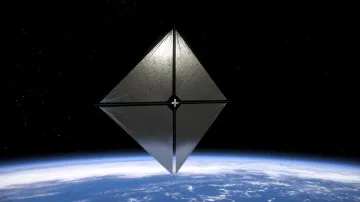NASA, a US space agency has recently announced a space mission which took off on Wednesday, (April 24), which has been marked as a significant advancement in space exploration. In this mission, the new spacecraft which is equipped with NASA's Advanced Composite Solar Sail System, has been utilising sunlight for propulsion.
Rocket Lab's Electron rocket was launched from New Zealand at 3:30 am IST, and it is further said that it is set to be installed 1,000 kilometres above Earth.
Mission details
Upon deployment at around 25 minutes post lift-off, the spacecraft will have a span of around 80 square meters, as per the information revealed in a report by NASA. The initial phase of the mission has been slated to last for a few months before the solar sail will fully be activated.
What is there at the core of the spacecraft? What is CubeSat Core?
At the core of the new spacecraft lies an oven-sized CubeSat, that serves as its propulsion engine. Directed by solar particles, it will propel the spacecraft, and will further showcase its innovative technology.
Following the spacecraft's launch, in a few weeks, the mission team will conduct a series of pointing manoeuvres to demonstrate the orbit-raising and lowering capabilities of the CubeSat using sunlight.
Upon successful orientation, the solar-powered space will certainly demonstrate its prominence in space exploration.
Mission significance
The success of this mission will hold paramount importance as it aims to reduce reliance on heavy propulsion systems.
Solar sail technology has promised to lower-cost missions of extended duration, marking a breakthrough in space exploration strategies.
Alan Rhodes, who is the mission’s lead systems engineer at NASA’s Ames Research Center, has highlighted the significance of solar propulsion. he further emphasized its reliance on the perpetual energy of the sun.
It will be harnessing the sunlight for the energy and in future missions it could forego massive fuel tanks, opting for larger sails for propulsion respectively.
ALSO READ: Qualcomm expands Snapdragon X series for AI PCs
It was also reported that Hanwha Systems, a South Korean defence solutions company has announced the successful conduct of the small synthetic aperture radar (SAR) mission for Earth observation and further captured images of landmarks in major cities including New York and Dubai.
